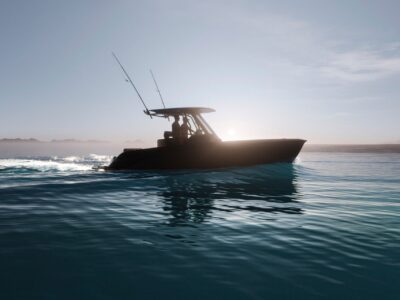“The Spice must flow.” – the Guildmaster in the 1984 movie adaptation of “Dune”
Frank Herbert’s sci-fi masterpiece Dune presents readers and viewers with a depiction of a world in which water is so scarce that special clothing is necessary just for survival. The “stillsuits,” created by the planet of Arrakis’s native population, the Fremen, can harness a human’s moisture from sweat, tears, and other bodily fluids and recycle them into potable water.
According to the planetologist in the story, Dr. Liet-Kynes, stillsuits can hydrate a person without losing a “thimbleful” of water a day. Herbert described these gear and Fremkits, a tent that absorbs bodily fluids for water, as part of the Fremen’s survival. It all sounds too innovative to be replicated in the present age, but some Cornell University researchers may have done exactly that.
Photo Courtesy Karen Morales/EurekAlert!
A new study published in Frontiers in Space Technologies outlined how Dune-like technology can become a reality. A team of biologists, neuroscientists, and medical experts successfully constructed a new astronaut suit that mimics several stillsuit properties. These suits would have better waste storage than the current spacewalk suit, which some astronauts bemoaned as unhygienic.
Spacewalks can last for hours — the longest lasted nearly nine. Astronauts have no opportunity to take bathroom breaks, so they must do their business in the suit. Waste is stored in certain pouches — well, specifically urine. Feces are stored in multi-layered diapers, which can get uncomfortable. With more extreme spacewalks on the horizon, including human-crewed missions to Mars, astronauts need an upgraded suit.
“The design includes a vacuum-based external catheter leading to a combined forward-reverse osmosis unit, providing a continuous supply of potable water with multiple safety mechanisms to ensure astronaut wellbeing,” Sofia Etlin, a research staff member at Weill Cornell Medicine and Cornell University and one of the study’s first author, explained in a press release.
Etlin and the team designed the urine collection to be more sophisticated, allowing it to become drinking water that can be accessed anytime, just like a stillsuit. There will also be a pouch for non-caffeinated high-energy drinks.
Flexible fabric undergarments connect to a collection cup molded for different genders. Once collected, the urine goes through a desalination and electrolyte process. In five minutes, an astronaut could have 500 milliliters of drinking water.
Photo Courtesy Claire Waters/EurekAlert!
These suits are ready for testing. If all goes to plan, they could replace the maximum absorbency garment (MAG) — the current spacewalk suit used by NASA. The suit is a massive sponge, pulling moisture to maintain comfort, but its storage properties are lacking. According to Etlin, they’ve been known to cause urinary tract infections and other health problems. They also only have one liter of drinking water, which is concerning when some spacewalks can last up to 24 hours in an emergency.
“Our system can be tested in simulated microgravity conditions, as microgravity is the primary space factor we must account for,” Dr. Christopher E. Mason, a professor at the same institute as Etlin and the study’s lead author, said in the press release. “These tests will ensure the system’s functionality and safety before it is deployed in actual space missions.”
It’s too early to see how these real-life stillsuits will function in space. As space exploration continues to defy the impossible, the need for upgraded equipment grows. There is a chance these Cornell suits will become the spacesuit of choice. We likely won’t see anything like Paul Atredies leading an army of Fremen to galactic war, but we might see some scientists fully explore the surface of Mars.





